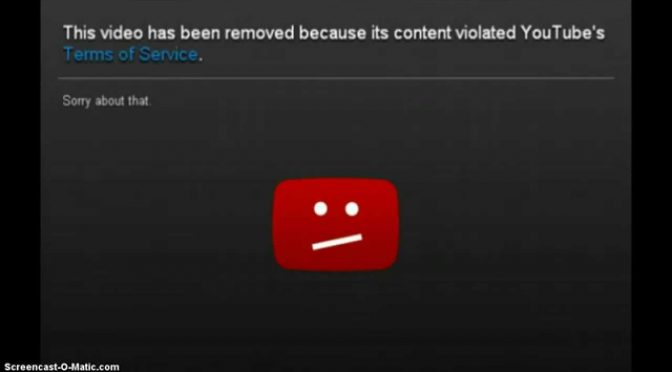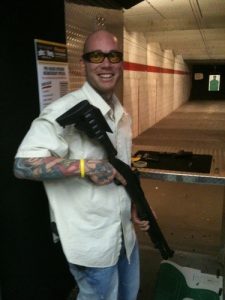By Jeff Knox
(April 12, 2017) One of the most common laments within the shooting fraternity is the lack of young blood in our groups. My brother Chris and I have been hearing it since we were little kids. In fact, now that we’ve spent over 40 years in this community, we are now among the gray-hairs lamenting the lack of youth, and looking for ways to attract ways to attract young people to our sports, our hobbies, and our passion for liberty. And while we have all been wringing our hands and scratching our thinning hairlines, a bunch of guys, young and old, from all over the country and the world, started recording the fun, challenges, and debates of the gun world on video, and posting those videos on the internet. Not only have those videos attracted the attention and interest of millions of younger people here in the U.S., they have exported the joy and excitement of our freedom all over the world – primarily on the video-hosting site YouTube.
If you enjoy watching videos about guns and shooting on YouTube, you’re probably aware that your favorite channels are in trouble. YouTube has “demonetized” all of them, meaning that these channels no longer get a share of YouTube ad revenue. The way they’ve done this is by adding the gun channels, along with many “prepper” and political “extremist” channels, to their restricted list, saying they are not family or advertiser friendly.
YouTube was created as an open platform with few restrictions on content. Creators could post a video of almost anything except pornography, extremely graphic violence, or anything clearly illegal. Still, videos of women “teaching” proper yoga form – in the nude, and other “educational” demonstrations are relatively common fare. Most of those types of videos are also in the “restricted” category, but I have no idea whether they have been “restricted” all along, or were only recently added to the list. I only recently discovered that there is a button at the bottom of the YouTube screen that allows viewers to turn on or off – see or not see – these restricted videos.
If you don’t want your kid watching nude yoga, you turn Restricted Mode on, and lock it with a password. If you have an interest in the internal details of nude yoga, or want to see the latest firearm industry news on the Gun Collective channel, you must leave Restricted Mode turned off. But whether you have Restricted Mode turned on or off, the restricted videos don’t share in the advertising revenue that YouTube generates.
Normally, using a complex, computer formula which tracks views and trends, YouTube rotates ads and shares a small piece of the ad revenue with the video creators. By placing videos on the restricted list, YouTube removes those videos, and their creators, from the revenue stream. So now gun channels, whose creators have worked years to build up tens of thousands, or in some cases, hundreds of thousands of loyal viewers, and who were reaping a modest reward for all of that hard work, have had that reward pulled out from under them without warning.
Gun-related content has always been extremely popular on the internet, but it has always been treated like a red-headed stepchild by the major platforms like Facebook, Google, and Twitter. There is also the problem that the enemies of guns and gun rights are often unscrupulous and cowardly, flagging gun posts and originators as “obscene” or in violation of some contractual standard, often resulting in hassles and expense as content is removed or automatic suspensions are applied and creators have to fight through complicated appeals processes to be vindicated.
It’s possible that some of the current YouTube controversy is a result of that sort of chicanery, but the heart of this mess lies with mainstream media using their influence with advertisers to demonize YouTube’s open platform approach, and scare their parent company, Google, into trying to censor the site’s content.
While some suggest boycotting YouTube, and going exclusively to alternative platforms like Vimeo, Daily Motion, or for gun channels, Full30.com, the reality is, right now at least, YouTube is the big dog on the block, and the only platform where a content creator can reach millions of potential viewers, as well as the only platform where a creator can build a sustainable income – if they’re not “restricted.”
If the only objective is having a place where people interested in gun videos can go to watch gun videos, then Full30.com is a valid option. But if the objective is to introduce new people – especially young people – to the fun, history, and importance of firearms, then we must fight to keep YouTube open, available, and profitable. That means lobbying YouTube, Google, and their advertisers.
Support your favorite channels. Buy their over-priced T-shirts and coffee mugs. Subscribe with regular contributions through Patreon. But most importantly express your outrage about the current state of affairs to anyone who will listen. Send messages to YouTube and Google. Ping on advertisers who are holding the platform hostage, and encourage companies – especially companies in the gun industry – to buy advertising on YouTube, IF YouTube will use the money to support firearm-friendly content.
Just doing nothing gets you nothing in return, and leaves the next generation ignorant of our rights, freedoms, and values.






